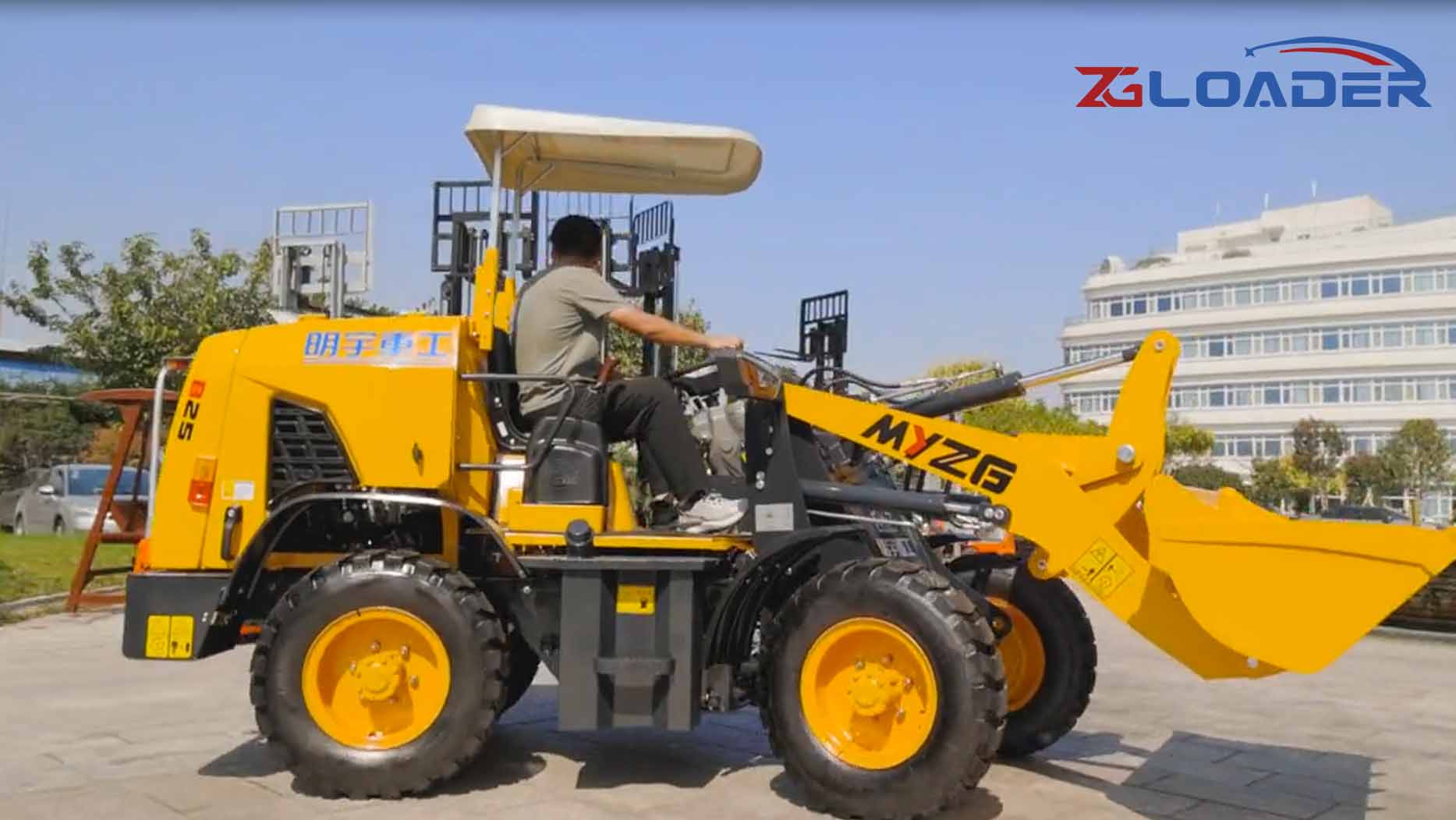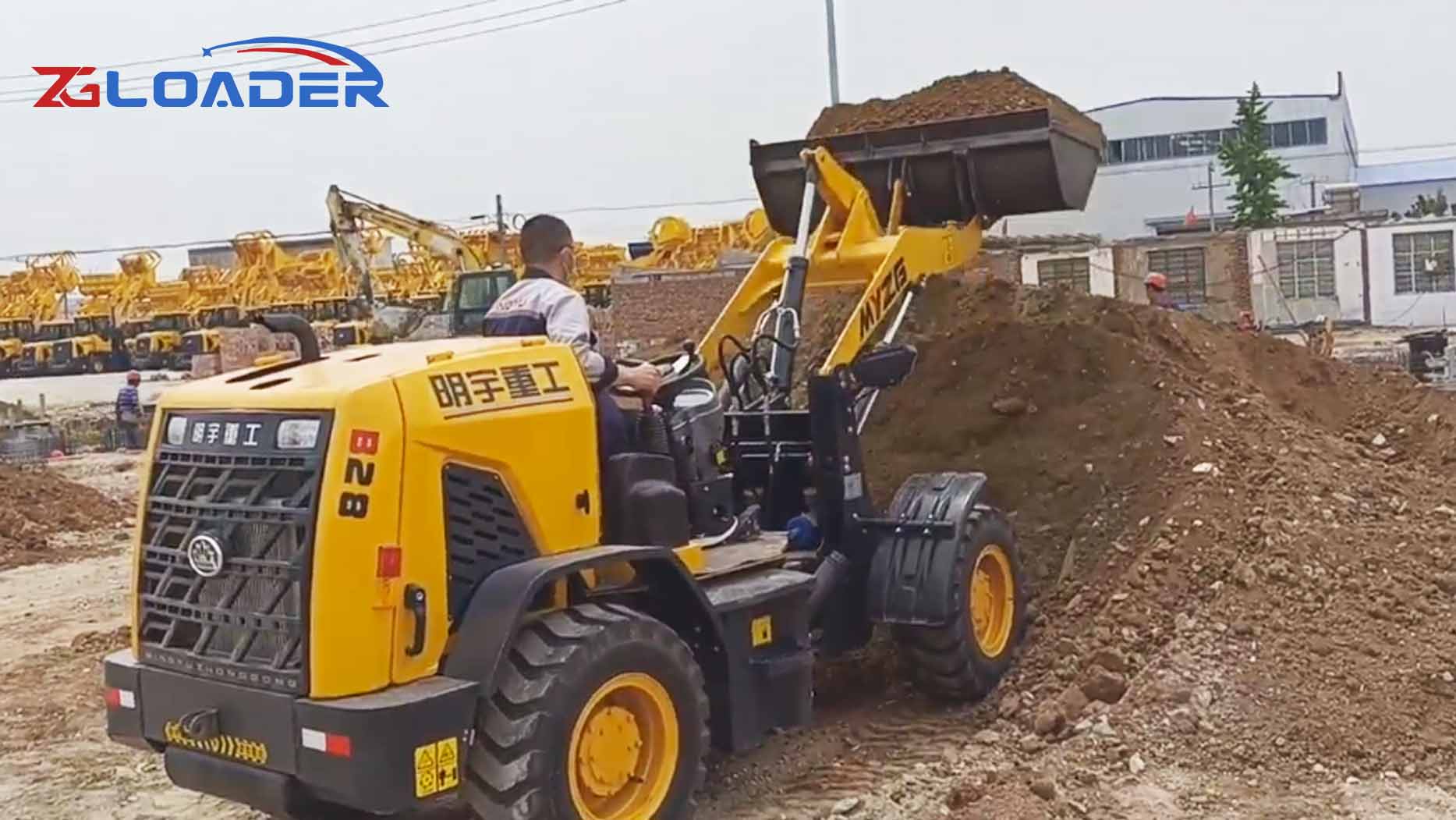Mining wheel loaders are robust, heavy-duty machines designed for the demanding environments of mining operations. They are a critical component of material handling, playing a vital role in loading, hauling, and dumping various materials, from ore and rock to overburden and coal. While similar in appearance to construction wheel loaders, mining wheel loaders are engineered with significantly enhanced durability, power, and capacity to withstand the rigors of continuous, large-scale mining activities. This article will delve into the specific features, functionalities, and considerations that define a mining wheel loader.
Core Functionality and Applications:
At its core, a mining wheel loader is a versatile piece of equipment primarily used for:
Loading: The primary function is to efficiently load excavated material into haul trucks, conveyors, or other transport systems. This requires a large bucket capable of scooping and lifting substantial volumes of material.
Hauling: While not designed for long-distance transport like haul trucks, mining wheel loaders can move material over shorter distances, such as from the mine face to a crusher or stockpile.
Dumping: The loader's hydraulic system allows for precise dumping of the loaded material into designated areas. The height and reach of the bucket are crucial for efficient dumping into high-sided haul trucks or hoppers.
Cleanup and Maintenance: Beyond primary material handling, mining wheel loaders are often used for cleanup tasks around the mine site, such as clearing debris, leveling surfaces, and assisting with maintenance activities.
Specific applications within a mining operation can include:
Open-pit mining: Loading ore and waste rock.
Underground mining: Mucking out blasted rock and loading onto shuttle cars or conveyors.
Stockpile management: Moving and blending materials in stockpiles.
Reclamation: Handling soil and other materials during mine closure and rehabilitation.
Key Features and Design Considerations:
Mining wheel loaders are distinguished from their construction counterparts by several key features:
Heavy-Duty Construction: Mining environments are incredibly harsh, subjecting equipment to extreme stresses, impacts, and abrasive materials. Mining wheel loaders are built with reinforced frames, thicker steel plating, and more robust components to withstand these conditions. Welding quality and material selection are paramount.
Powerful Engine: These machines require powerful engines to provide the necessary torque and hydraulic power for digging, lifting, and hauling heavy loads. Engines are typically diesel-powered and often feature advanced technologies like turbocharging and electronic controls for optimal performance and fuel efficiency.
Large Bucket Capacity: Bucket size is a critical factor determining the loader's productivity. Mining wheel loader buckets are significantly larger than those used in construction, maximizing the amount of material moved per cycle. Bucket design is also important, with various configurations available for different material types.
Robust Hydraulic System: The hydraulic system is the heart of the wheel loader, responsible for powering the bucket, lift arms, and steering. Mining wheel loaders utilize high-pressure hydraulic systems with large pumps and valves to handle the demanding loads and cycle times. Cooling systems are crucial to prevent overheating in continuous operation.
Durable Tires: Tires are subjected to extreme wear and tear in mining environments. Mining wheel loaders utilize specialized, heavy-duty tires designed for cut resistance, puncture resistance, and high load capacity. Tire inflation and maintenance are critical for optimal performance and safety.
Operator Comfort and Safety: Operator fatigue can significantly impact productivity and safety. Mining wheel loaders are equipped with comfortable, climate-controlled cabs featuring ergonomic controls, adjustable seating, and excellent visibility. Safety features such as rollover protective structures (ROPS), falling object protective structures (FOPS), and advanced braking systems are standard.
Advanced Technology: Modern mining wheel loaders incorporate various technologies to enhance performance, safety, and efficiency. These can include:
Load weighing systems: Provide accurate measurements of the material loaded, optimizing truck loading and preventing overloading.
GPS and telematics: Track machine location, performance data, and maintenance schedules.
Automatic lubrication systems: Reduce manual maintenance and ensure proper lubrication of critical components.
Collision avoidance systems: Enhance safety by alerting operators to potential hazards.
Remote control capabilities: Allow for operation in hazardous or inaccessible areas.
Selecting a Mining Wheel Loader:
Choosing the right mining wheel loader is crucial for optimizing productivity and minimizing operating costs. Several factors must be considered:
Material type and density: The type of material being handled will influence bucket selection and machine size. Denser materials require smaller buckets but greater lifting capacity.
Loading requirements: The required loading capacity, cycle times, and dumping height will determine the appropriate loader size and configuration.
Hauling distance: For longer hauls, larger loaders with higher travel speeds may be necessary.
Mine site conditions: Factors such as terrain, grade, and space constraints will influence the choice of loader.
Maintenance requirements: Ease of maintenance and access to spare parts are essential considerations.
Safety features: Ensure the loader meets all relevant safety standards and is equipped with necessary safety features.
Cost: The initial purchase price, as well as operating and maintenance costs, should be factored into the decision.
Maintenance and Operation:
Proper maintenance is essential for maximizing the lifespan and performance of a mining wheel loader. Regular inspections, lubrication, and component replacements are crucial. Operator training is also vital to ensure safe and efficient operation. Understanding the machine's capabilities, limitations, and proper operating procedures is paramount.
Future Trends:
The future of mining wheel loaders is likely to be shaped by several trends:
Automation: Increased automation, including remote control and autonomous operation, will improve safety and productivity.
Electrification: Electric or hybrid-electric drive systems will reduce emissions and operating costs.
Data analytics: Advanced data analytics will provide insights into machine performance and maintenance needs, enabling predictive maintenance and optimized operation.
Improved fuel efficiency: Continued advancements in engine technology and hydraulic systems will further improve fuel efficiency and reduce environmental impact.
Conclusion:
Mining wheel loaders are indispensable machines in modern mining operations. Their robust construction, powerful engines, and large capacities enable them to handle the demanding tasks of loading, hauling, and dumping various materials. Selecting the right loader for the specific application, coupled with proper maintenance and operation, is crucial for maximizing productivity, minimizing costs, and ensuring safety in the challenging mining environment. As technology continues to advance, future generations of mining wheel loaders will likely be even more efficient, safe, and environmentally friendly.
Post time:Feb.15.2025



